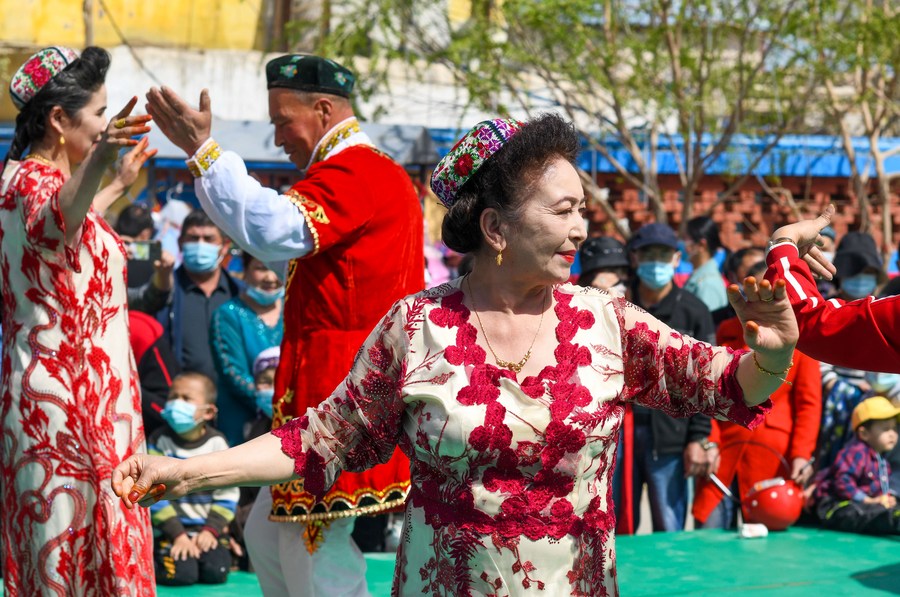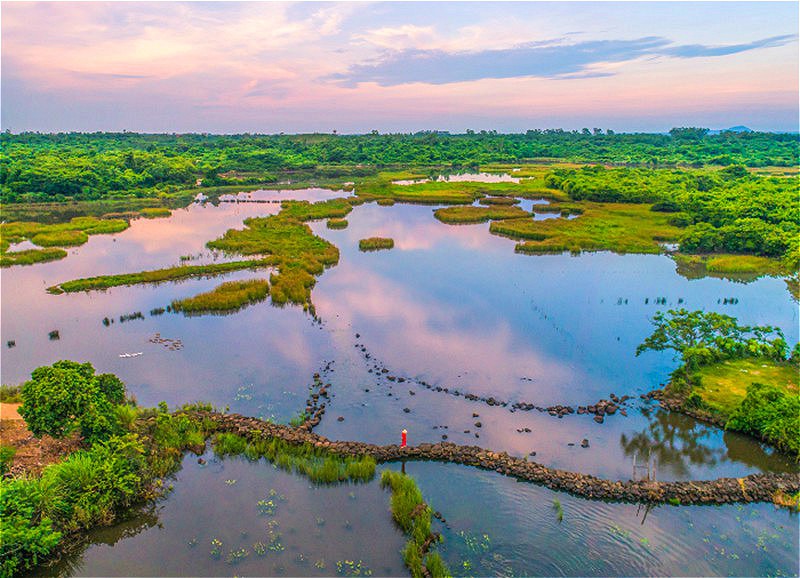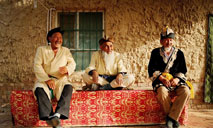Xinjiang's population increases 18.5 pct over past decade

Locals dance to welcome tourists in Awat Township of Korla City, northwest China's Xinjiang Uygur Autonomous Region, April 10, 2021. (Xinhua/Zhao Ge)
URUMQI, June 14 (Xinhua) -- The population of northwest China's Xinjiang Uygur Autonomous Region increased by 18.52 percent from 2010 to 2020, the country's seventh population census showed.
Xinjiang's permanent population had reached 25.85 million by October 2020, a rise of about 4.04 million from the country's sixth population census in 2010, the latest census data released Monday by the regional statistic bureau showed.
The population growth rate in the region over the past decade was 13.14 percentage points higher than the country's average.
According to the data, the stable population growth is attributable to the region's economic and social development. In recent years, Xinjiang has attracted a large number of people to invest and do business in the region, thanks to its stable and harmonious environment.
Of the total permanent population in Xinjiang, the Han ethnic group accounts for 42.24 percent, while ethnic minorities comprise 57.76 percent. The Uygur ethnic group alone accounts for 44.96 percent.
Compared with the sixth population census, the population of ethnic minority groups in Xinjiang increased by 14.27 percent, or more than 1.86 million, data showed. The growth rate was 4.01 percentage points higher than that for ethnic minorities across the country.
The population of the Uygur ethnic group grew by 1.62 million, or up 16.2 percent from a decade ago.
The region has a rather younger population. The proportion of people aged 60 or above stood at 11.28 percent, compared with 18.7 percent for the whole country.
The number of people with college education rose to 16,536 per 100,000 from 10,635 per 100,000 people in 2010, the census data showed. This is 1,069 people more than the country's average.
The number of people who have received senior high school education rose to 13,208 per 100,000 people from 11,582 per 100,000 in 2010, the census data showed.
The region's illiteracy rate was 2.66 percent, 0.01 percentage points lower than the country's average.
The census data also showed that the number of people living in cities and towns in Xinjiang accounted for 56.53 percent of the region's total population, while those living in the countryside accounted for 43.47 percent. Compared with the census in 2010, the proportion of the urban population rose by 13.73 percentage points.
Photos
Related Stories
- Vocational training center graduates tell personal stories, refute 'genocide' accusations
- Western allegation of genocide in Xinjiang hardly convincing: Singaporean newspaper
- China's Xinjiang helps keep BRI trade afloat despite COVID-19
- Brother of Xinjiang "witness" debunks torture claims
- Scenery at Kanas scenic area of Altay, Xinjiang
Copyright © 2021 People's Daily Online. All Rights Reserved.










